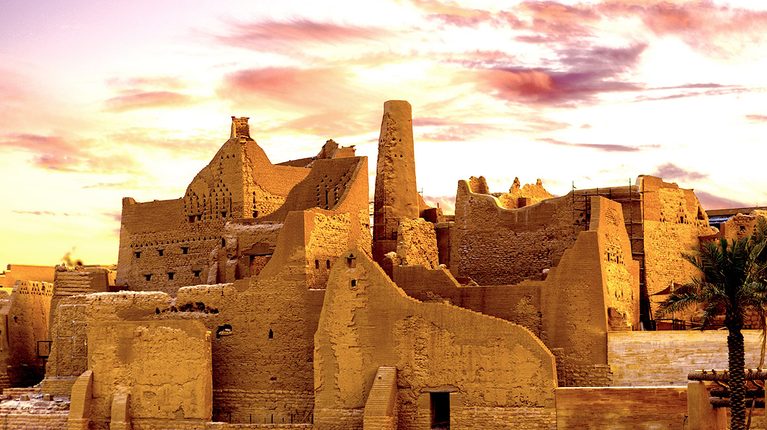Historic sites are rich with the tangible and intangible heritage of built forms, art and culture. Such assets lend significant social, environmental and cultural value to towns and cities.
From an economic perspective the deep legacy of a city can attract cultural tourism, stimulate local economies and provide routes to innovation.
Nevertheless, heritage neighbourhoods around the world are under threat from universal challenges posed by natural disasters, climate change, population growth and urban expansion.
What is more, the impact of these challenges is unique in regard to historical cities.
Rapid tourism growth, lack of infrastructure, regulatory limitations and considerations around retaining the cultural identity of our heritage cities pose further challenges for city development authorities and decision makers.
In recent years Middle Eastern countries have taken up the modernisation of historic and heritage cities as a crucial component of their cultural preservation and economic development strategies.
Governments have implemented urban design initiatives and reformatory measures, investing in technologies to document, preserve, and showcase the rich historical legacies of cities and make them accessible to a global audience.
Saudi Arabia aims to transform some of its historic cities and heritage neighbourhoods into major cultural and tourism destinations, as part of its National Transformation Programme, while the UAE has been using digital tools to preserve and present its cultural neighbourhoods.
These efforts exemplify the region’s commitment to innovation while preserving traditions, ultimately safeguarding the region’s cultural heritage, stimulating tourism and educating future generations.
- The Gulf has a rich musical heritage – it needs an audience
- Dubai launches $30m project to upgrade historic creek
- Ancient rock art to draw modern tourists to Saudi Arabia
Cities such as Saudi’s Diriyah, Qatar’s Lusail and Oman’s Muscat are collaborating with Unesco, the UN’s educational scientific and cultural arm, to pursue initiatives which blend a rich heritage with modernisation.
The Department of Culture and Tourism in Abu Dhabi has focused on technologies such as 3D scanning and digital archiving for sustainable practices in heritage.
Neighbouring Dubai has been successful in integrating al-Fahidi historical neighbourhood, Old Souq and several historic areas into its smart initiatives.
Amid rapid urbanisation trends technology has an increasingly vital role to play in highlighting conservation needs, cultural promotion, public awareness, local integration and development of the assets for locals and visitors.
Smart approaches such as intelligent traffic management, parking management systems, embedded analytics and facial recognition tools all have a role to play in achieving smart mobility and safety for heritage assets.
Smart grids, smart metering and supervisory control and data acquisition can help in achieving better management of water and energy, while smart bins, GPS-based tracking and odour detection devices can be used for managing waste.
 visitsaudi.com
visitsaudi.comRoom occupancy sensors, smart thermostat, adaptive lighting and climate control can be used to automate historic buildings. Internet of Things devices – sensors for air quality, chemicals, noise, temperature and humidity – can be used to monitor micro-climatic conditions.
AI-powered personalised experience platforms can be used for smart tourism, and smart permitting systems for government services. These technologies can significantly contribute to the cognitive revival of historic cities and heritage neighbourhoods.
The harmonisation of technological solutions can foster a sustainable, efficient and enriched urban environment, preserving the cultural essence of historic cities while meeting the demands of modern urban living.
Cognitive platforms can enhance decision-making by providing comprehensive, real-time insights into the structural health of historic buildings, urban planning needs and the effectiveness of preservation efforts.
It enables more efficient resource allocation – ensuring that interventions are both timely and aligned with the preservation goals.
Furthermore, a unified platform facilitates community engagement and participatory planning by making information accessible to a wider audience, thereby contributing to the revival of historic cities.
The collaboration of governments, preservation authorities, international development organisations and citizen groups, coupled with cognitive technologies, is important in shaping the resilient identity of our heritage cities.
Rajat Chowdhary is partner, technology consulting PwC and Gaurav Jaisinghania is senior manager, cities technology, PwC
